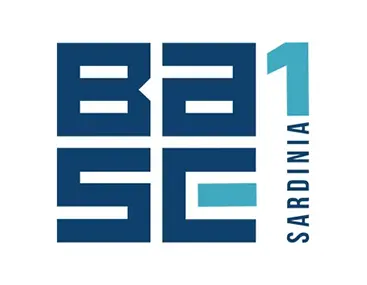Latest Features
Harnessing AI To Revolutionize PTSD Therapy Through Diving
Scuba diving has been shown to be an effective, adjunct therapeutic tool for treating individuals suffering from Post-Traumatic Stress Disorder (PTSD). Here, multiple trauma survivor, author of three books on PTSD and tech diver Diana Giorgetti explores the potential of using artificial intelligence (AI) in conjunction with scuba diving to revolutionize the therapeutic experience, and enable therapies to be tailored to individual needs. Her conclusion? The future is underwater and is AI-driven!
Text and images by Diana Giorgetti.

In recent years, we’ve seen a growing convergence between technology and mental health care, a trend that’s poised to transform how we approach therapeutic interventions for conditions like Post-Traumatic Stress Disorder (PTSD). Scuba diving, often celebrated for its serene, otherworldly qualities, has been gaining recognition as an effective adjunct therapy for PTSD. I can personally attest that scuba diving can be a transformative and life skill building activity for people affected by PTSD. This combination of peace and immersion in a completely different environment often proves cathartic for individuals grappling with trauma, offering both escapism and a unique form of mindfulness.
Enter artificial intelligence (AI), a burgeoning field with revolutionary implications across industries. When applied to the realm of scuba diving—and more specifically to divers with PTSD—AI has the potential to revolutionize the therapeutic experience. From AI-driven Emotional Support Systems to Virtual Reality (VR) enhancements for exposure therapy, this technological infusion brings a level of customization and predictive accuracy hitherto unattainable. It’s not merely about making diving more fun or less stressful; it’s about turning each dive into a targeted, data-informed therapeutic session that allows the diver to surface rejuvenated.
Imagine a world where your dive instructor has real-time data on how each dive impacts your stress levels or emotional well-being. Consider the role AI can play in crafting Personalized Dive Therapy Programs, with machine learning algorithms sifting through a plethora of data points from past dives to design a future dive that maximizes therapeutic benefit. Think about the support networks that can be built through AI-Driven Support Groups, linking divers based on therapy goals and even specific triggers, creating a community that fosters recovery and resilience.
For those with PTSD, these AI enhancements can offer a profoundly impactful shift in their healing journey. The diving experience becomes not just an escape from the real world, but a finely-calibrated therapeutic intervention. As we explore these untapped possibilities, the integration of AI into scuba diving is more than a novel idea—it’s an imperative. We have the technology to make the underwater world not just a frontier for exploration but also for healing. And, in a society where the emotional and psychological tolls of PTSD are becoming increasingly recognized, this kind of innovation is not just welcome; it’s necessary, and it is finally at our wet fingertips.
So, let’s delve into it, shall we?

Emotional Support AI
The Emotional Support AI system is an integrated, wearable device, acting as an intelligent assistant throughout the dive. Unlike traditional dive computers that provide data such as depth, time, and no-decompression limits, this AI-enabled device would also monitor vital physiological markers like heart rate, cortisol levels, and skin conductivity. It uses this data to assess the diver’s emotional state in real-time, recognizing the early signs of stress or panic that could escalate into a dangerous situation.
Let’s take Sarah, who experiences claustrophobia, but is a highly trained and safe diver. Though she has been diving for over 10 years, she recently discovered the world of overhead environments, such as caves. She has successfully executed countless cave dives, but this one is different. As she begins to feel trapped in a large underwater cave (not a restriction), her wearable device picks up spikes in her heart rate and cortisol levels. The AI responds by sending a gentle buzz, prompting her to check her dive computer, which guides her through a series of deep-breathing exercises. This intervention helps her manage her immediate stress response, enabling her to exit the dive safely.

Personalized Dive Therapy Programs
The essence of this idea is to leverage machine learning algorithms to create a deeply personalized diving therapy regimen for individuals with PTSD. Over time, the AI system aggregates data from multiple dives, capturing a variety of metrics—such as depth reached, time underwater, biometrics like heart rate and cortisol levels, and even subjective input about the diver’s emotional state during different parts of the dive.
The algorithm analyzes this complex dataset to discern patterns or trends. For instance, it might find that a diver experiences lower stress levels when they are in brightly lit, shallow waters with a high density of marine life. Conversely, it might note that the same diver experiences heightened stress when navigating through underwater caves or tunnels.
With this kind of data-driven insight, the AI system can then make highly personalized recommendations for future dives. Instead of a one-size-fits-all approach to therapeutic diving, each session becomes a targeted experience, designed to reinforce positive emotional responses and mitigate triggers. The end goal is not just a safe and enjoyable diving experience, but a therapeutic one that actively contributes to the individual’s long-term mental health treatment strategy.
Imagine a diver named Jack, who’s dealing with PTSD from his time in the military. After several dives, the AI system notes that Jack’s stress markers significantly drop when he’s diving in coral-rich environments at a depth of 30 to 40 feet. Based on this, the AI system curates a list of dive sites for Jack that fit this profile, effectively turning each future dive into a targeted therapy session. Over time, Jack finds these personalized dive experiences to be a valuable complement to his broader PTSD treatment program.
This approach essentially turns what is often a generalized therapeutic activity into a finely-tuned, individualized treatment modality. It offers the possibility of making each dive not just a recreational activity, but a targeted therapeutic intervention.

VR + AI for Exposure Therapy
The integration of Virtual Reality (VR) and AI offers a revolutionary approach to exposure therapy. The VR system is designed to recreate highly realistic underwater environments, while the AI acts as the therapist’s assistant. As the person experiences different simulated scenarios, the AI monitors their physiological and psychological responses. If the system detects rising stress levels, it can adjust the simulated environment or introduce coping mechanisms, providing a nuanced approach to confronting triggers.
Consider Tom, who developed PTSD after a combat experience. The system starts him off in a simple coral reef setting, monitoring his reactions. As he becomes comfortable, the AI gradually incorporates more challenging elements like deep water or the presence of large marine animals, giving him a controlled environment to confront and manage his fears.

AI-Driven Support Groups
One of the most overlooked aspects of therapy is the power of community. Traditional PTSD therapy often focuses on individual treatment plans, ignoring the collective strength that can be harnessed from sharing experiences and support. The AI-Driven Support Groups feature aims to fill this gap by turning the dive community into a therapy-enhancing tool.
Utilizing a complex set of machine learning algorithms, the AI system goes beyond the surface-level data points of preferred dive sites or the kinds of marine life that divers enjoy. It delves into deeper psychological factors like what types of underwater environments produce the most calming effects for each diver, or which trigger stress responses. Armed with this information, the AI system can make intelligent, nuanced matches between divers, creating pairs or groups whose members complement each other’s therapeutic goals.
This isn’t just about putting people with similar interests together; it’s about creating a synergistic relationship that enhances the therapeutic effectiveness of the dive. By connecting divers with similar therapy goals or calming triggers, the AI system helps build a community of like-minded individuals who can offer each other emotional and psychological support. This peer-to-peer network adds another layer to the diving experience, transforming it into a collective therapeutic journey.
Emily and Lisa both suffer from PTSD but have different traumatic experiences. Despite this, the AI system recognizes that they both find serenity in diving through kelp forests. When paired up by the system, they discover they not only enjoy the same underwater settings but also benefit from the emotional support they offer each other. Their mutual support amplifies the calming effects of the kelp forest dives, providing both with a more potent therapeutic experience. Over time, their partnership grows into a strong emotional support system, adding a dimension of collective healing to their individual therapeutic journeys.

Automated After-Action Reports
Traditionally, evaluating the success of a therapeutic dive has been a subjective experience, often relying on self-reporting and memory recall. The Automated After-Action Reports feature revolutionizes this assessment phase by implementing data-driven analysis. Utilizing advanced machine learning algorithms, the system gathers data from multiple features like the Emotional Support AI and Personalized Dive Therapy Programs to generate an evidence-based debriefing.
The idea is to take the “gut feeling” out of the equation and replace it with quantifiable metrics. This not only helps divers better understand their progress but also empowers them to make more informed decisions about their future dive plans. Did the diver manage their stress better in certain conditions? Were there moments where their stress levels peaked? This automated feature answers these questions and more.
By turning qualitative experiences into quantitative data, the Automated After-Action Reports provide actionable insights. This data-driven approach allows for a level of personalization and adaptive planning that has never before been possible in the realm of therapeutic diving.
Mary, who uses diving as part of her PTSD therapy, receives a meticulously detailed report after her dive. This report breaks down her stress levels, moment by moment, and highlights areas where she has made significant improvements. For instance, segments where she had previously experienced heightened anxiety now show markedly lower stress levels. Armed with this information, Mary feels more confident to attempt dives that are deeper and more challenging than she would have considered before. The report serves not just as a record but as a roadmap, guiding her on how to get the most therapeutic benefit from her future dives.

Emergency Situational Awareness
For dive instructors and guides, maintaining a 360-degree awareness of their environment and the well-being of each diver in their group is a herculean task. The Emergency Situational Awareness AI system is designed to act as an intelligent co-pilot, providing real-time insights that could be crucial for decision-making.
This AI-powered tool is fed by the data collected from Emotional Support AI wearables worn by each diver. It monitors a range of metrics, from physiological signals like heart rate and cortisol levels to behavioral data like rapid ascents or unsteady movements. By employing advanced machine learning algorithms, the system not only notes individual stress markers but can also detect patterns that suggest group-wide stress or discomfort.
The real game-changer is the AI’s predictive capabilities. Based on the data, the AI could, for example, foresee that a particular diver might soon reach a point of acute stress and alert the instructor before it becomes a full-blown crisis. This goes beyond merely reacting to emergent situations; it allows for preventive actions that could be lifesaving.
The system would ideally integrate with the instructor’s existing dive computer, alerting them through simple, non-intrusive signals. This enables the instructor to make timely interventions, guiding the group away from potential triggers or initiating calming exercises, thus ensuring not just the physical but also the emotional safety of the divers.
Let’s think of Doug, a seasoned dive instructor, is leading a group that includes Nina, who suffers from PTSD related to confined spaces. As the group approaches a sunken shipwreck, the AI system sends Doug a predictive alert indicating that Nina’s stress levels are rising at a rate that could soon become problematic. Armed with this predictive insight, Doug communicates through hand signals to divert the group toward a more open environment, avoiding a potential escalation of Nina’s stress levels. Later, Nina shares that she was indeed beginning to feel confined but didn’t know how to communicate it. Both Nina and Doug are grateful for the AI’s timely intervention.
In essence, Emergency Situational Awareness powered by AI amplifies the instructor’s ability to maintain a safe and accommodating dive environment, especially crucial for divers dealing with PTSD. It elevates the concept of situational awareness from reactive responses to proactive interventions.

Trigger Alert System
Managing triggers is a key component of dealing with Post-Traumatic Stress Disorder (PTSD), particularly in an environment as unpredictable as the ocean. Traditional methods of identifying and managing triggers rely heavily on self-awareness and recall. The Trigger Alert System changes this paradigm. By employing machine learning algorithms, the AI system provides a proactive approach to identify potential stressors before they can affect the diver.
The AI system meticulously analyzes data from previous dive sessions, gathering a comprehensive understanding of the diver’s reactions to various underwater stimuli such as marine life, water conditions, and sound levels. Once a pattern is established, the system uses this data to anticipate future triggers. This allows divers to make informed decisions before they even hit the water, empowering them with a newfound level of control over their diving experience.
For example, if a diver has previously exhibited increased stress when encountering sharks or when diving in areas with strong currents, the AI system flags these conditions if they are expected in an upcoming dive. The system can even extend its predictive capabilities to external factors like boat traffic near the dive site, which might not be within the immediate control of the diver but could nonetheless impact their experience.
Let’s use Alex, who suffers from PTSD triggered by loud, sudden noises, receives a warning from the AI system that his chosen dive site is close to a high-traffic boating area. This data-driven insight allows him to either mentally prepare for the experience or choose a different, quieter location. This level of foresight not only adds a layer of safety but also makes the dive more enjoyable and therapeutic.

In A Nutshell: The Future is Underwater and Ai-Driven
The merging of artificial intelligence with the therapeutic elements of scuba diving marks a watershed moment for PTSD treatment. As an outdoor activity, scuba diving offers unique therapeutic benefits, including a connection with nature, a sense of buoyancy that eases physical tension, and the sensory experience of being underwater, which many find calming. These benefits are enhanced when AI enters the equation.
By applying AI’s predictive analytics and real-time data processing, we’re not just adding a layer of safety; we’re revolutionizing therapy. The AI system empowers PTSD sufferers with unprecedented levels of personalized support. Whether it’s flagging potential triggers before they occur or adjusting therapeutic diving programs based on individual needs, AI makes each dive not just an adventure but a tailored therapeutic session.
For instructors, the benefits are equally groundbreaking. Real-time monitoring means they can make data-backed decisions on the fly, dramatically increasing the safety and efficacy of the dive. In doing so, they can focus not just on the technical aspects of diving but also on its therapeutic potential, thereby delivering a more holistic experience to participants.
Furthermore, the AI-driven approach democratizes therapeutic diving. A personalized, data-backed experience becomes accessible to a broader range of people, making it possible for more individuals to explore the healing potential of the underwater world.
In summary, the integration of AI technology into the world of scuba diving is not just an incremental step forward; it’s a quantum leap in how we approach PTSD therapy. By marrying the unique therapeutic elements of an outdoor activity like scuba diving with the precision and adaptability of AI, we’re setting a new standard for what is possible in mental health intervention. It’s not just about exploring the world beneath the waves; it’s about transforming lives, one dive at a time.
DIVE DEEPER
InDEPTH: The New Clinical Discipline: Diving Psychology by Laura Walton
InDEPTH: Can Diving Help Heal Trauma and Abuse? by Holly Gibbs
InDEPTH: We Sea You! by Georgina brown

Diana Giorgetti is a multiple trauma survivor, author, idea brewer, problem solver, professional freelancer, and web-designer. A graduate of the University of Miami and Nova Southeastern University with degrees in Psychology and Education Law, she is passionate about helping others, scuba diving, and writing (though not necessarily in that order). She lives in Miami, Florida with her two children and a crazy giant schnauzer. She is the author of “The Fundamentals of PTSD: A Guide to Disemboweling the Disorder and Reclaiming Your Life,” “PTSD & Relationships: A Survival Guide to Love and Be Loved,” and “The PTSD Warrior Healing Mindset: Changes in Habits and Routines to Help Retrain the Brain After Trauma,” and she’s working on her fourth self-help book. You can find Diana’s books on Amazon: amazon.com/author/dianahelps
























































